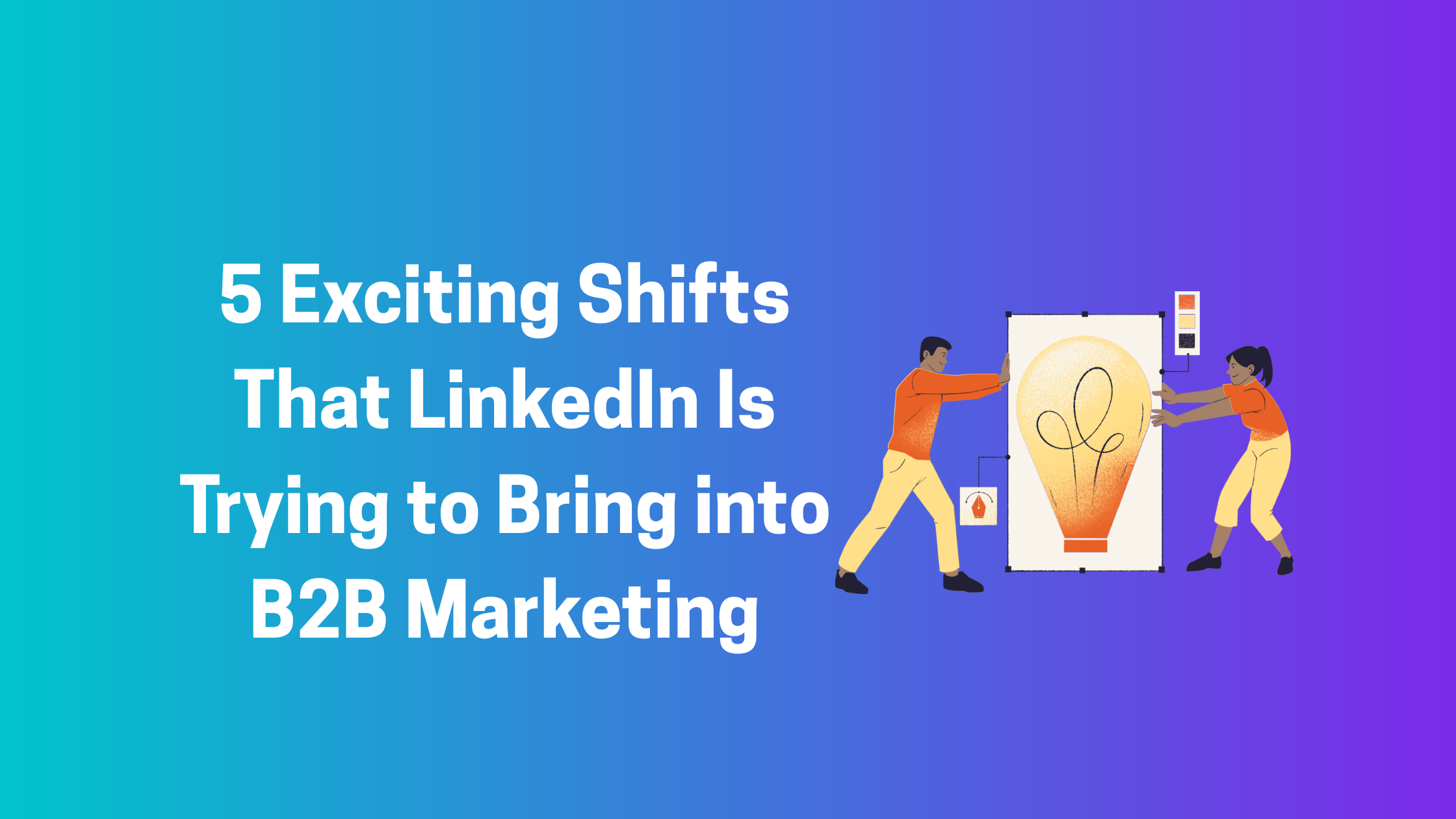
5 Exciting B2B Marketing Shifts LinkedIn Is Bringing to The Industry.
At Shivyaanchi, we have been a fan of LinkedIn’s B2B marketing newsletter.
It’s because it feels as if LinkedIn is on a roll to change how we see B2B marketing.
From talking about bringing creativity and emotions to the (so far) boring B2B, to changing how we calculate the impact of B2B brand marketing in the long-term: Team LinkedIn is hell bent on becoming the first force where B2B-marketing innovations happen.
In this article, I’m going to talk about the things that I have observed from these amazing newsletters.
Because B2B marketing is upgrading. And it’s upgrading so good that we can’t afford not to talk about it. So, let’s go!
Here are the 5 things that LinkedIn is trying to make more sense of in the B2B marketing world:
1. More emotion-inducing storytelling in B2B
Remember The Office when Michael Scott created a spec commercial for Dunder Mifflin?
How he molded the story of selling papers to businesses in a way that connected you to the idea, emotionally.
That ad was the only thing that made me rethink my impression of him. (Okay, there are a couple more, but you get the drift!)
When Michael talks about his ad being, “full of humor and full of depth and full of heart, and it was real,” I agree with him in hindsight. B2B brands need such emotional ads.
You can watch that part here.
It highlights a truth: B2B marketing often forgets the human element. LinkedIn is pushing for more emotion-driven storytelling. They are advocating for content that resonates on a personal level, moving beyond dry facts and figures. Think stories that evoke empathy, inspiration, and even a touch of humor.
This shift recognizes that B2B buyers are still people, driven by emotions and aspirations. By weaving compelling narratives, brands can build stronger connections and foster lasting relationships. Instead of just stating features, LinkedIn champions showcasing the “why” behind your product or service, the impact it has on real people, and the values it represents.
2. Beyond ad costs and number of likes
Putting a line between brand awareness and demand generation. For too long, B2B marketers have relied on simplistic metrics like cost-per-click and vanity metrics like likes and shares. LinkedIn is challenging this by emphasizing the distinction between brand awareness and demand generation.
They’re advocating for a more nuanced approach, focusing on metrics that truly reflect long-term value, such as:
- Brand lift studies: Measuring how your brand perception changes over time.
- Share of voice: Understanding your brand’s presence in the market compared to competitors.
- Attribution modeling: Tracing the customer journey across multiple touchpoints to understand the true impact of your marketing efforts.
This shift encourages marketers to think beyond immediate conversions and invest in building a strong, recognizable brand that drives sustainable growth.
3. Taking multiple touchpoints into account
The B2B buying journey is rarely linear. It involves multiple stakeholders and numerous interactions across various channels. LinkedIn is urging marketers to adopt a multi-touch attribution approach.
This means understanding how each touchpoint contributes to the final decision, rather than attributing all credit to the last interaction. By mapping the customer journey and analyzing the impact of each touchpoint, marketers can optimize their strategies and allocate resources more effectively.
LinkedIn’s platform, with its rich data and targeting capabilities, is positioned to help marketers achieve this holistic view. They are encouraging the use of tools that allow for a better understanding of the customer’s path to purchase.
4. Working with multiple timeframes
B2B sales cycles can be long and complex. LinkedIn is advocating for a long-term perspective in marketing. They are pushing back against the short-term, quick-win mentality that often dominates the industry.
This means investing in brand building and thought leadership that may not yield immediate results but will pay off in the long run. They are highlighting the importance of building trust and credibility over time, rather than focusing solely on immediate lead generation.
LinkedIn is also promoting the idea of aligning marketing efforts with the customer’s buying journey, understanding that different stages require different strategies and timeframes.
5. Data is always cool
And, now, B2B marketers are about to make more sense of it!
LinkedIn is not just preaching the importance of data, but also emphasizing the need for actionable insights.
They are encouraging marketers to move beyond simply collecting data and to focus on analyzing it to identify patterns, trends, and opportunities. This involves using data to understand customer behavior, optimize campaigns, and personalize experiences.
LinkedIn’s platform offers a wealth of data, from demographic information to engagement metrics. They are providing tools and resources to help marketers make sense of this data and use it to drive better results.
Conclusion
In essence, LinkedIn is pushing for a more sophisticated, human-centered, and data-driven approach to B2B marketing.
This shift promises to reshape the industry and create more meaningful connections between brands and their audiences.
So that when your target audience discovers your brand, they feel something.
Something different than the annoyance of getting hundreds of cold emails in their inbox.
Something that humors them, amuses them, makes them feel proud, or helps them realize that their problem is real.
And when they face that problem again, the first solution that comes to their mind is YOU!


